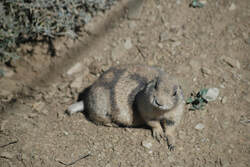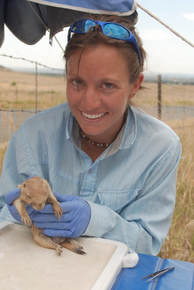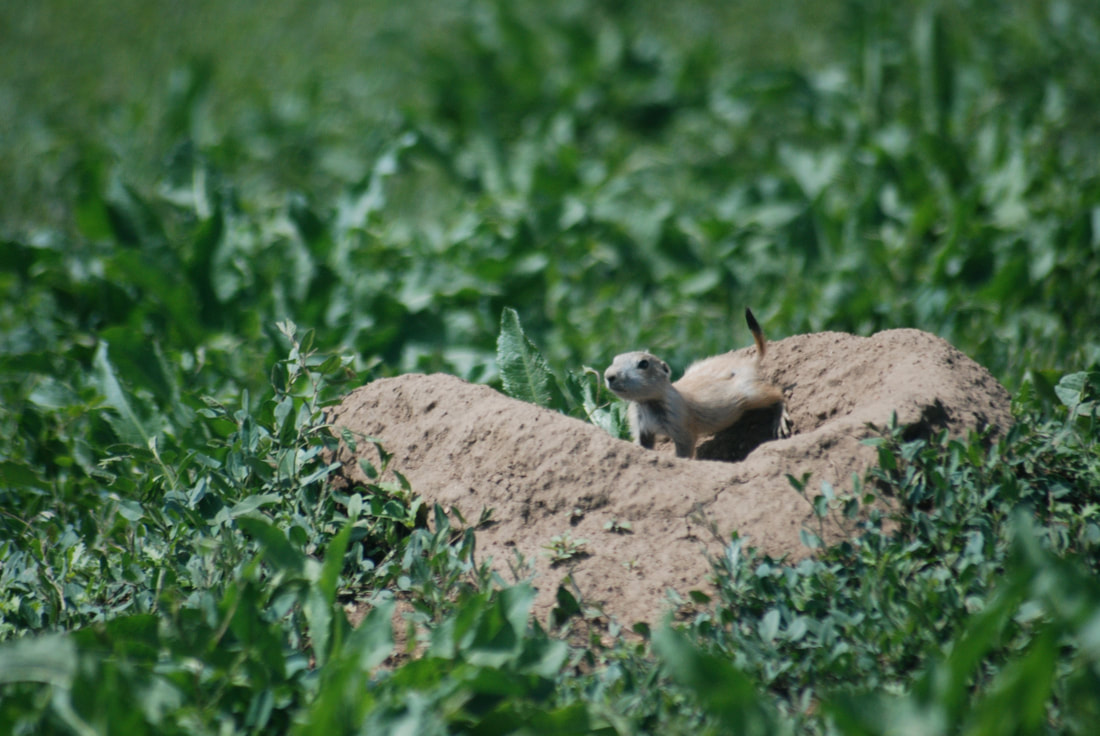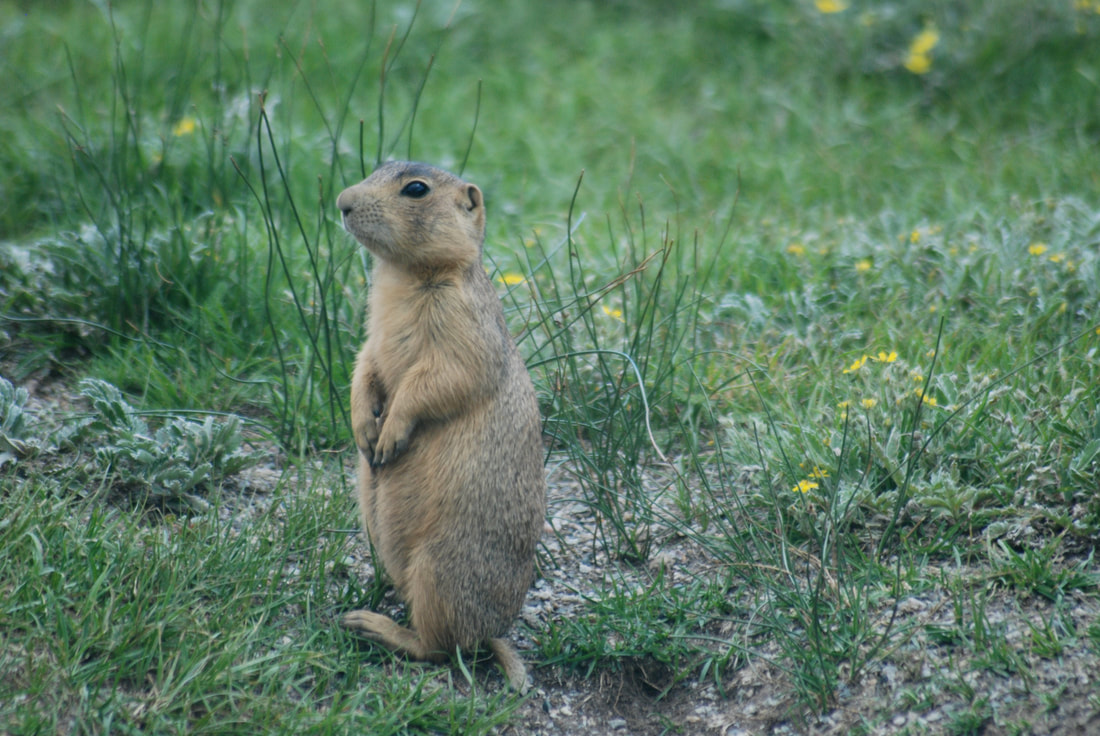|
Prairie dogs are a group of fossorial (burrowing) ground squirrels (family Sciuridae) that live in large colonies. They are most closely related to other ground squirrels, and they are split into five species: black-tailed prairie dogs (the most widespread and social species; Cynomys ludovicianus), Mexican prairie dogs (found only in Mexico; C. mexicanus), white-tailed prairie dogs (C. leucurus), Gunnison’s prairie dogs (C. gunnisoni), and Utah prairie dogs (C. parvidens). Above: Juvenile black-tailed prairie dog in Colorado Prairie dogs are commonly, but mistakenly, referred to as gophers, which are mouse-like rodents in the family Geomyidae (e.g., http://en.wikipedia.org/wiki/File:Geomys_bursarius.jpg). Pocket gophers are more highly fossorial than prairie dogs, and spend almost all of their time underground. They are also solitary, and males interact with females only during mating. In contrast, prairie dogs are highly social. They can live in colonies with thousands of individuals, and prior to human eradication, estimates of some black-tailed prairie dog colony sizes were in the millions (Hoogland 2006). Prairie dogs spend much of their time above ground foraging for food (primarily grasses) and scanning for predators. Because they are numerous and conspicuous, they are an important food source for black-footed ferrets, hawks, coyotes, rattlesnakes, badgers and other predators. Below: Adult white-tailed prairie dog, with painted markings for individual recognition, looking up towards our observation tower from outside its burrow  In addition to their importance as a food item for predators, prairie dogs aerate soil and increase plant diversity and growth rates by bringing nutrients to the surface through their burrowing activity. They also provide habitat for other rodents, rabbits, amphibians and burrowing owls, which share their burrows. Because of their pronounced effects on grassland ecosystems and other species, prairie dogs have been dubbed “keystone species” (Miller et al. 1994). Several species are listed or have been proposed for listing as endangered species. Below: Gunnison's prairie dog, smaller and darker than a white-tailed prairie dog, but also with a white-tipped tail References:
Hoogland, J.L. 2006. Conservation of the black-tailed prairie dog: saving North America’s western grasslands. Island Press, Washington D.C. Miller, B., G. Ceballos and R. Reading 1994. The prairie dog and biotic diversity. Conservation Biology 8: 863-894.
0 Comments
|
AuthorAn evolutionary biologist with a passion for conservation. Or vice versa. Archives
August 2011
Categories |



 RSS Feed
RSS Feed
